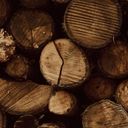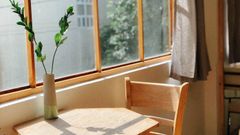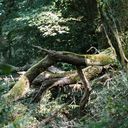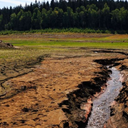

You may be surprised to find that cutting trees is essential to maintaining a healthy forest. It allows habitats to flourish and because wood is a sustainable material, we can plant more trees in their place.
As foresters, our aim is to imitate and support nature, so we only cut trees when we know we can plant more.
Wood for construction
Wood is 12 times more insulating than concrete, 350 times more insulating than steel and 1,500 times more insulating than aluminium. Wood, which is particularly resistant to fire, transmits heat 10 times more slowly than concrete and 250 times more slowly than steel.

For heating
The use of wood avoids emissions from the combustion of fossil fuels, which emit more greenhouse gases. Logs, wood chips and pellets can be used to fuel efficient and less polluting heating appliances.

Furniture
Craft manufacturing is nowadays swallowed up by the industrial giants of furniture production. The craft industry makes it possible, with local wood, to create furniture and to repair it by making work the carpenters and cabinet makers of our territory.

Let's make the forest a biodiverse sanctuary where all plant and animal life is respected. It is urgent!
Let's make the forest a biodiverse sanctuary where all plant and animal life is respected. It is urgent!
The first thinning cut
Young trees need space and light to grow. If they are in a dense stand, they can't develop properly as photosynthesis is more difficult. The first thinning cut reduces the density of the trees and allows the smallest to develop in ideal conditions.
The improvement cut
Around 6–10 years after first thinning, our foresters identify the most successful trees and cut those that are hindering growth. This cut reduces competition in the forest and allows the remaining trees to get more energy from the sun, as well as water and mineral salts from the ground. All part of sustainable forest management.
The regeneration cut
We harvest trees when they mature, but not all species reach maturity at the same time. The href="https://ecotree.green/en/offers/species/sessile-oak?_forceLocale=en">sessile oak, for example, reaches full maturity after 60 years. When our foresters make a cut, they remove the mature wood before it dies or becomes unusable. That helps regenerate the forest ecosystem and gives young seedlings the light and space they need to grow.
The sanitary cut
Fungi and other pests have a huge impact on tree bark and a tree's root system. To prevent insect infestations or diseases spreading, foresters cut and remove affected or dying trees. That helps us avoid contaminating neighbouring trees and in turn the entire forest. A total clearcut would have a terrible effect on biodiversity.

Clear cuts have three major consequences.
Soil erosion
Soil contained and enriched by deep roots is suddenly exposed. Without protective litter and a supply of nutrients, it loses strength. Water starts to run off the soil, which is no longer aerated by roots and microorganisms. The erosion caused makes any form of natural regeneration or planting very difficult. Pioneer tree species may be possible, but they are the least interesting for biodiversity and producing wood. It takes a long time to recover a rich ecosystem after clearcutting.

A change in climate
Soil is one of the planet's main carbon reservoirs, along with oceans and forests. When soil is exposed by clearcutting, carbon previously stored in organic form is released into the atmosphere as CO2. That’s just one reason the process is a major contributor to greenhouse gas emissions.

Weakened biodiversity
Clearcutting is a brutal and devastating disruption of a forest’s ecosystem. For its birds, insects, mammals, fungi and plants, living without shelter and food quickly becomes impossible. They all need a stable environment to thrive and maintain that strong biodiversity our planet desperately needs.

Here at EcoTree, we believe in sustainable, responsible forestry. We think it's time to move away from clear-cutting and monoculture, which reduces the diversity of forests. That's why we nurture forests diversified by the age and species of its trees.